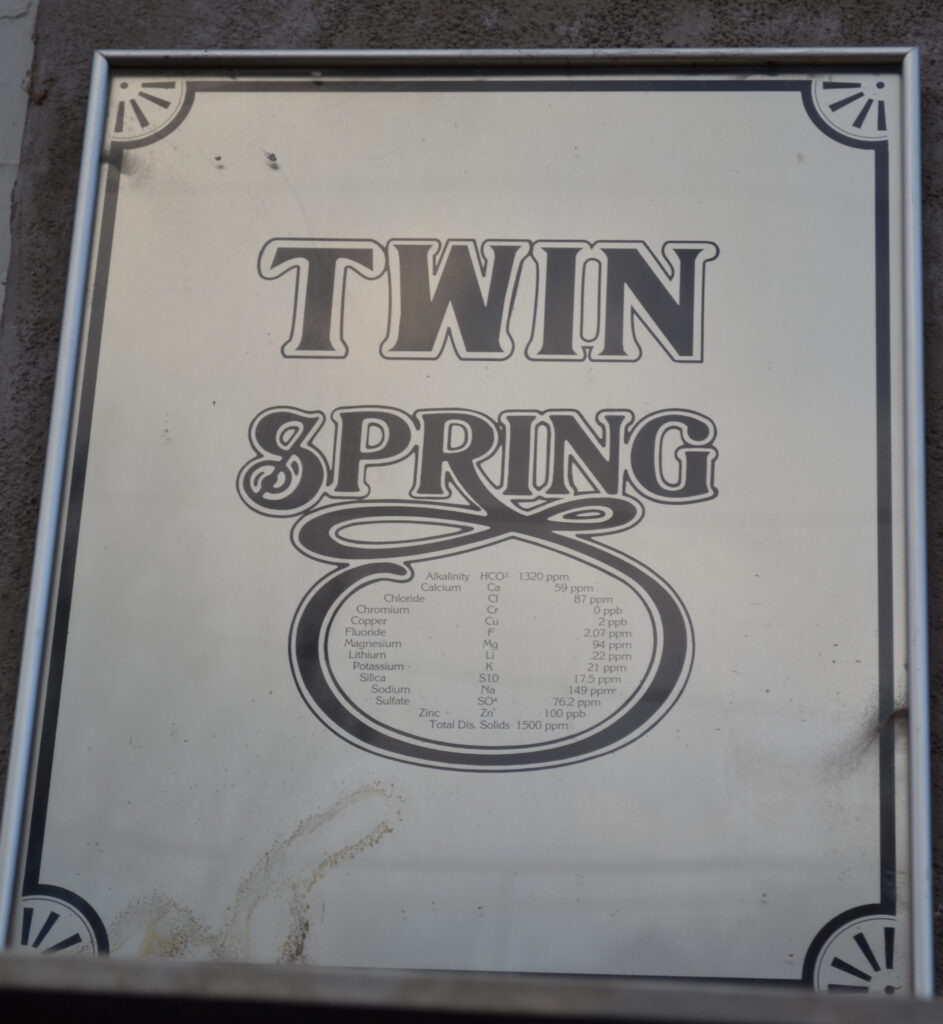
Article by Thomas Baurley, Leaf McGowan, Techno Tink Media
This is one of the more popular springs along Ruxton Avenue due to its high Lithium content. Two springs combine into one, pouring through this font. The water is very sweet, high in lithium, potassium, calcium, and magnesium, and a top-rated water source for making sweet carbonated lemonade water. Others describe the taste as sweet, tangy, and minerally. Of all the Manitou Springs, it has the highest concentration of magnesium. The font is located outside a storefront entrance.
The Twin Spring was drilled in 1920 by William Gamby Strong Crosby, who came to Manitou from Prince Edward Island in 1889 searching for a cure for his asthma. He is most known for moving a segment of Indian cliff dwellings from a remote Colorado site to Manitou, where he built the Cliff Dwellings Museum in 1907.
Initially, they say this soda-type spring ran through two pipes from separate water flows. Over the years, these two flows merged into one, which is why it is called “Twin Spring.” It is rich in calcium, potassium, and hints a trace of lithium. It has also been called “Lithia Springs” due to its distinct Lithia concentration or “Twin-Link Spring” after the former owner of the building, George Link.
Before the current plaque was a metal plaque engraved with the following: “This naturally sparkling mineral water, sacred to the Ute Indians for centuries, comes from deep within the Colorado Rocky Mountains. It has journeyed through a maze of underground streams for thousands of years, collecting a delicate balance of mineral and trace elements. Eventually, the water surfaces here, originally as two springs, which accounts for the name TWIN SPRING, but has since merged into one greater flow. It is a natural diuretic and, with its sweet taste, is considered in Manitou as the connoisseur’s choice.”
I had once owned the fairy shop across the street from this Spring, which was once the old funeral home. My store and living quarters were where they had the viewing room. In the center of the storeroom floor is a trap door leading to a cavern above an active spring – I believe this is the actual Twin Springs, or one of them, tapped by this decorative font on the street. You can access Ruxton Avenue this spring by walking up two blocks from Manitou Avenue, which is on the left. The spring is continually flowing at high capacity from the font.
The spring water has traces of lithium, which has been used since the 1960s to treat bipolar disorder. The spring fell into disrepair but was restored in 1994 by the Mineral Springs Foundation and its private owner, Kerstin Ericsson. The font was designed and cast by Kerstin Ericsson depicting a whimsical scene of Manitou and its surrounding features.
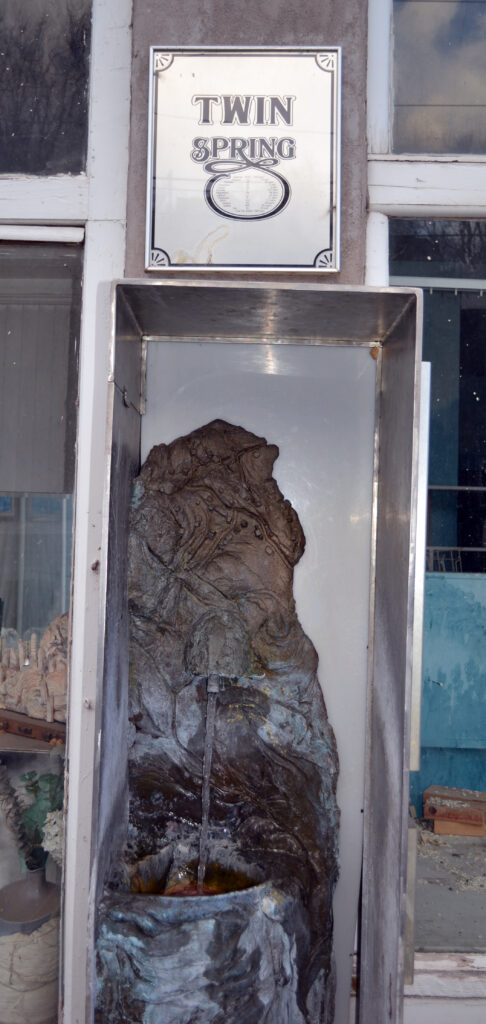
Manitou Springs – The little touristy village of Manitou Springs is most famous for its mineral springs that well up through eight fonts (previously ten fonts, upwards of 50 springs) peppered throughout the town. These springs are free to visit, and each holds its own variation of minerals, magic, folklore, and healing properties that visitors have sought throughout the ages. Each has its unique flavor, natural carbonation, and effervescence. This valley was originally heavily frequented by various Native American tribes who visited Fountain Creek and its natural springs for their healing magic, offering homage and great respect to the spiritual powers that dwell here. They believed these magical springs were the gift of the Great Spirit Manitou, from which the town and valley were named. They brought their sick here for healing. The aboriginal inhabitants and visitors of the area called the “Great Spirit” as “Manitou”, and felt these mineral springs was its breath, as the source of the bubbles in the spring water. This made the waters and grounds extremely sacred.
The Ute, Arapaho, Cheyenne, and many other tribes came here to partake of the great spirit’s breath. They would heal their sick here, collect the waters, stay for winters, and share in the waters as an area of peace where no conflict was allowed. There were believed to have been ten natural springs in the valley. The Euro-Americans caused conflicts and skirmishes with the Natives, pushing them out so they could utilize the valley for business, resort, tourism, and commerce. It is said that after the Natives left, they cursed the area for the Whites and that no company would ever succeed there.
Ever since, it has been an ever-changing valley with businesses coming and going, failing and closing, and new ones coming in and replacing those that left. Stephen Harriman Long was one of the first white explorers to record the waters in 1820. The expedition’s botanist and geologist, Edwin James, detailed the healing nature of the seas. The explorer George Frederick Ruxton wrote in his travel about these “boiling waters” as well that “… the basin of the spring was filled with beads and wampum, pieces of red cloth and knives, while the surrounding trees were hung with strips of deer skin, cloth, and moccasins”. It is a common practice to leave similar objects, items, and cultural artifacts around the world at magical and healing springs, wells, and bodies of water.
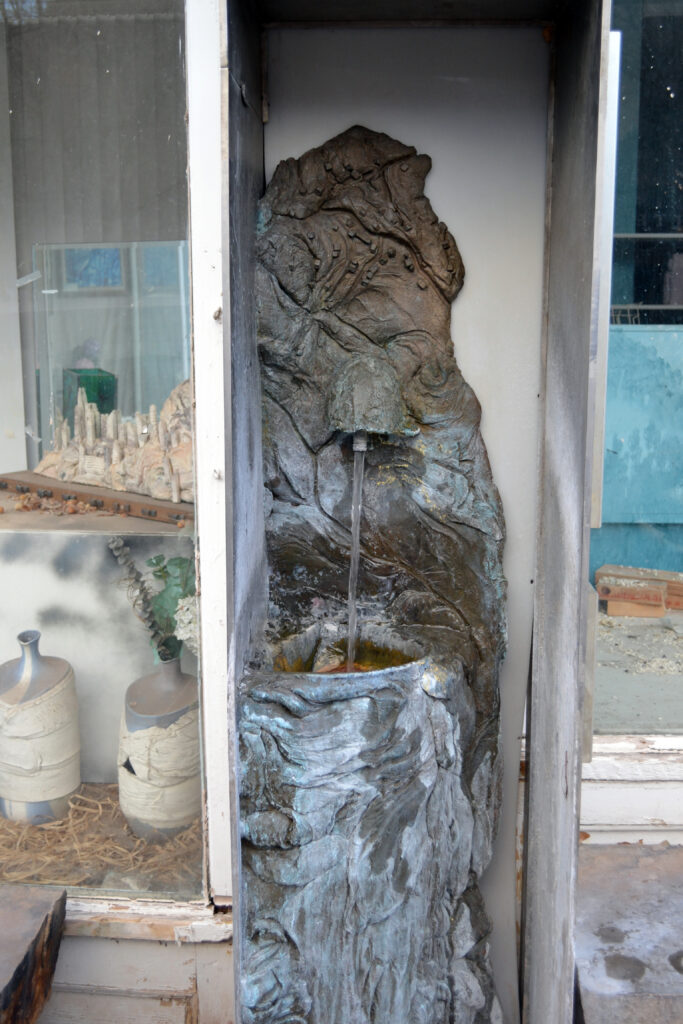
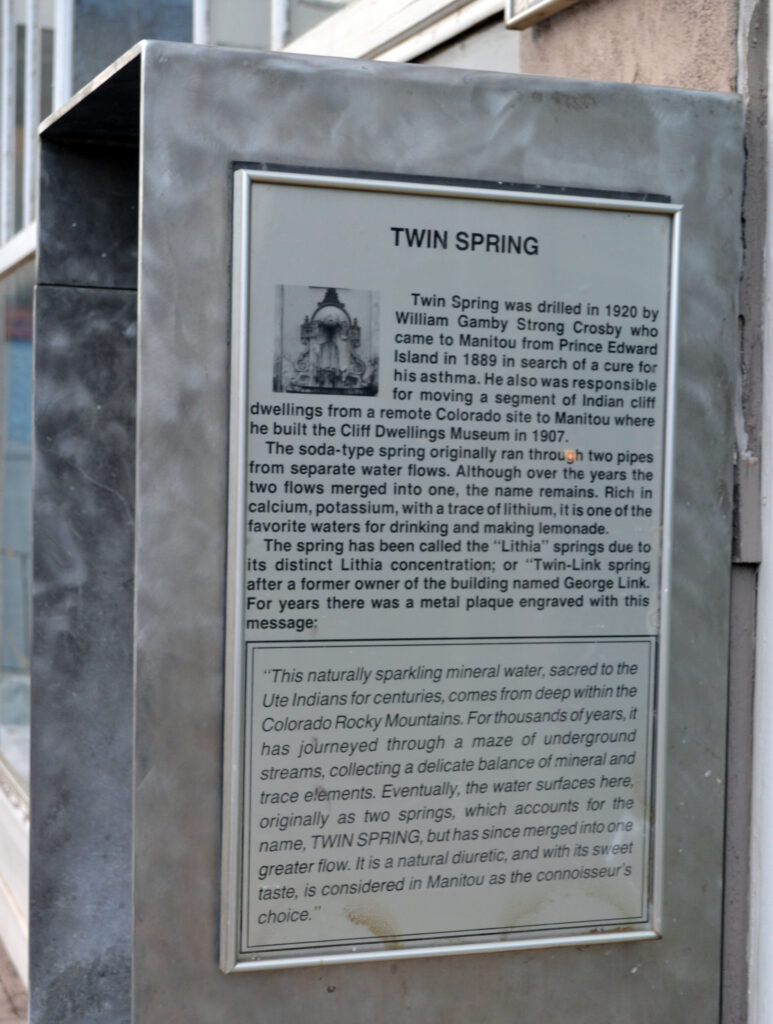
Nearly 50 years later, Dr. William Abraham Bell and General William Jackson Palmer made plans to develop a health resort here during the Civil War with “a vision of dreamy summer villas nestled in the mountains with grand hotels and landscaped parks clustered around the springs” that they called “Fountain Colony” and “La Font.” It became Colorado’s first resort town. By 1871, white settlers had begun developing the area for tourism, health care, and profit. A resort was soon developed here, taking advantage of the waters and incorporating them into medicinal and healing water therapies. This brought great prosperity to the region. By 1873, a developer named Henry McAllister, who worked for Palmer, spread the news about the medicinal benefits of the Springs and pushed for it to become a spa resort, including “incomparable climate and scenery” as its backdrop.
Then came various medicinal practitioners, such as Doctor Edwin Solly, who pushed the area as a resort for healing and therapy, preaching the combined waters to drink, soak in, and breathe pure air mixed with the sunny climate would be the most effective prescription to treat tuberculosis. The commercial businesses began to claim the various springs, enclosing some of them as the village grew. The first was the Cheyenne Spring House, which was established as a red sandstone bricked conical roofed structure. Over 50 wells and springs were drilled shortly after, many enclosed. Once popularity disappeared and “dried up,” many of these springs were capped, paved, and closed. However, as the fad died, medical centers and hospitals around the United States improved, and Manitou was forgotten and suffered abandonment. The Mineral Springs Foundation was formed in 1987 as an all-volunteer 501(c)3 non-profit to protect, improve, maintain, and manage the springs, targeting the restoration of some springs and promoting their popularity once again. They host walking tours called “Springabouts” every Saturday from Memorial Day to Labor Day, beginning downtown, and can be arranged by visiting the Tourist center or calling 719-685-5089. Upon request, the visitor center will provide maps, brochures, detailed content charts, and sampling cups. They can also be found on their website at http://www.manitoumineralsprings.org.
The series of springs has been developed as a National Register of Historic Places district and is located in one of the country’s largest districts of its kind. It was initially called the “Saratoga of the West” and established as a resort community within a spectacular setting at the edge of the Rocky Mountains along the base of Pikes Peak. Numerous bottling companies moved into the area, making a profit on the waters, the most famous of which was “Manitou Springs water,” sold globally.
Geology: The waters come from two sources in the Rampart Range and Ute Pass: “deep-seated waters” that travel through limestone caverns and drainage systems created by karst aquifers. The water dissolves the limestone and absorbs carbonic acid, carbon dioxide, and other minerals, making it “effervescent” or slightly naturally carbonated. Volcanic and inner core processes heat it. Through time, the waters return to the surface naturally using an artesian process rising to the surface, collecting soda, minerals, and sodium bicarbonate upwards. The other water sources are Fountain Creek and Williams Canyon, snow melt, rainwater, and surface waters. The warm water then flows into a limestone cavern, where it becomes carbonated and springs forth to the surface in natural and human-drilled locations. Most of these waters take thousands of years to complete their voyage from the mountain snow-capped peaks down to the inner earth and back up to the surface – freeing their content and solutions from industry, development, and atmospheric contamination.
The Springs of Manitou:
https://wells.naiads.org/the-magic-and-minerals-of-manitou-springs/
- Cheyenne Spring – This natural sweet soda spring comes from limestone aquifers and is believed to be over 20,000 years old.
- Iron Spring – The Iron Spring is named after its harsh, foul, iron-tasting flavor and content. It was a man-made spring drilled in the 1800s and prescribed to patients for iron deficiency.
- Lithia / Twin Spring – This is a combined location of two man-made drilled springs—Twin Springs and Lithia Springs. It is popular for its Lithium content and sweet taste, calcium, lithium, and potassium content. It’s popular to mix it in lemonade.
- Navajo Spring is a natural soda spring over which commercial development was built. It is now within and beneath the popcorn and candy store. This was the most popular spring, frequented by Native Americans and early Euro-American settlers, and was the founding spring for the village. It originally fed a large bathhouse and bottling plant, bringing fame to the town.
- Old Ute Chief Spring – is a defunct spring outside the old Manitou Springs bottling plant.
- Seven Minute Spring – A man-made spring drilled in 1909 to enhance the neighboring hotel’s tourist attraction. Its unique carbonization caused it to erupt like a geyser every 7 minutes. It became dormant until the 1990s, when it was re-drilled, and the surrounding park was established.
- Shoshone Spring—This natural spring had sulfur content and was prescribed by various physicians for curative powers before modern medicine became popular and effective.
- Soda Spring – located in the spa stores next to the arcade.
- Stratton Spring—The Stratton Foundation created this man-made drilled spring as a service to Manitou Springs village, where tourists could come and partake of its waters. It is dedicated to early Native American Trails.
- Wheeler Spring—This is another man-made drilled spring donated to the city by settler Jerome Wheeler of the New York Macy’s. Wheeler resided and banked in the town during the mining and railroad period. His former home is located where the current post office is today.
| Mineral | Amount | |
| Alkalinity | 1,020 mg/L | |
| Calcium | 252 mg/L | |
| Chloride | 76.2 mg/L | |
| Copper | – | |
| Fluoride | 2.40 mg/L | |
| Iron | – | |
| Lithium | 188 mg/L | |
| Magnesium | 77.2 mg/L | |
| Manganese | – | |
| Potassium | 18 mg/L | |
| Silica | 15.4 mg/L | |
| Sodium | 129 mg/L | |
| Sulfate | 72.8 mg/L | |
| Zinc | .080 mg/L | |
| Total Dissolved Solids | 1,300 mg/L+ |
Mineral spring comparison chart
References:
- Gazette 2015 “List Manitou Springs”. Website referenced 12/21/16 at http://gazette.com/list-the-springs-of-manitou-springs/article/1565225.
- Harrison, Deborah 2003 “Manitou Springs”. Arcadia Publishing. ISBN 978-0-7385-2856-4.
- Manitou Springs Chamber of Commerce 2012 “The History of Manitou Springs”.
- Mineral Springs Foundation 2013 “Mineral Springs”. Website referenced 12/21/16 at http://www.manitoumineralsprings.org
- Manitou Mineral Springs 2015 “7 Minute Spring”. Website referenced 12/21/16 at http://manitoumineralsprings.org/7-minute-spring.html
- National Register 2013 “American Dreams – National Register of Historic Places in El Paso County, Colorado.
- Visit Colorado Springs 2016 “Manitou Mineral Springs”. Website referenced 12/21/16 at http://www.visitcos.com/manitou-mineral-springs.
- Wikipedia 2016 “Manitou Springs Mineral Springs”. Website referenced 12/21/16 at https://en.wikipedia.org/wiki/Manitou_Mineral_Springs
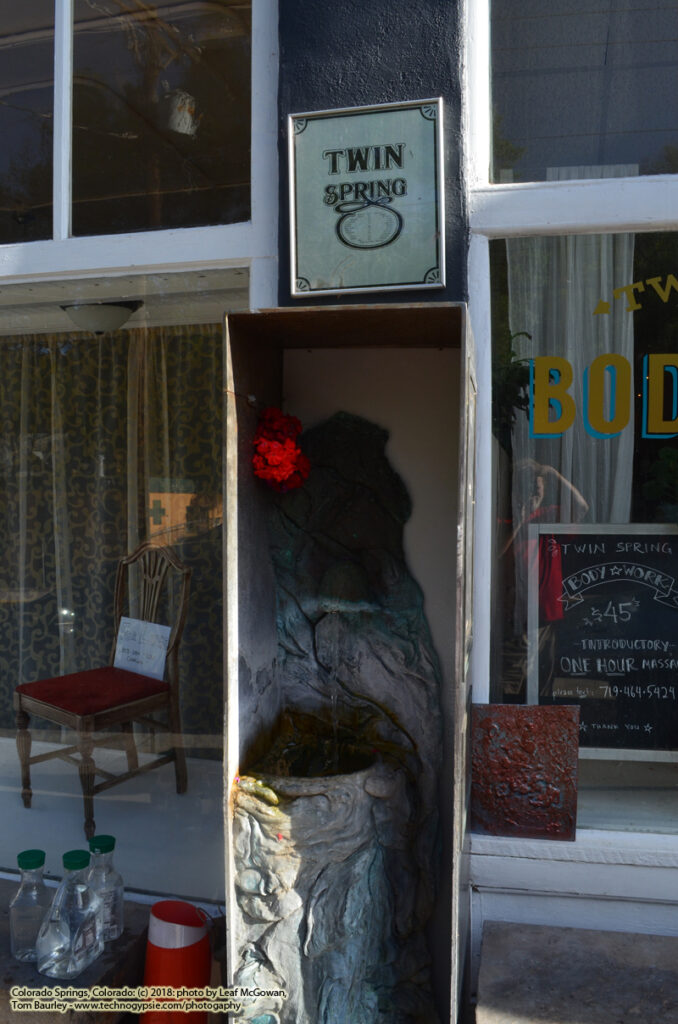
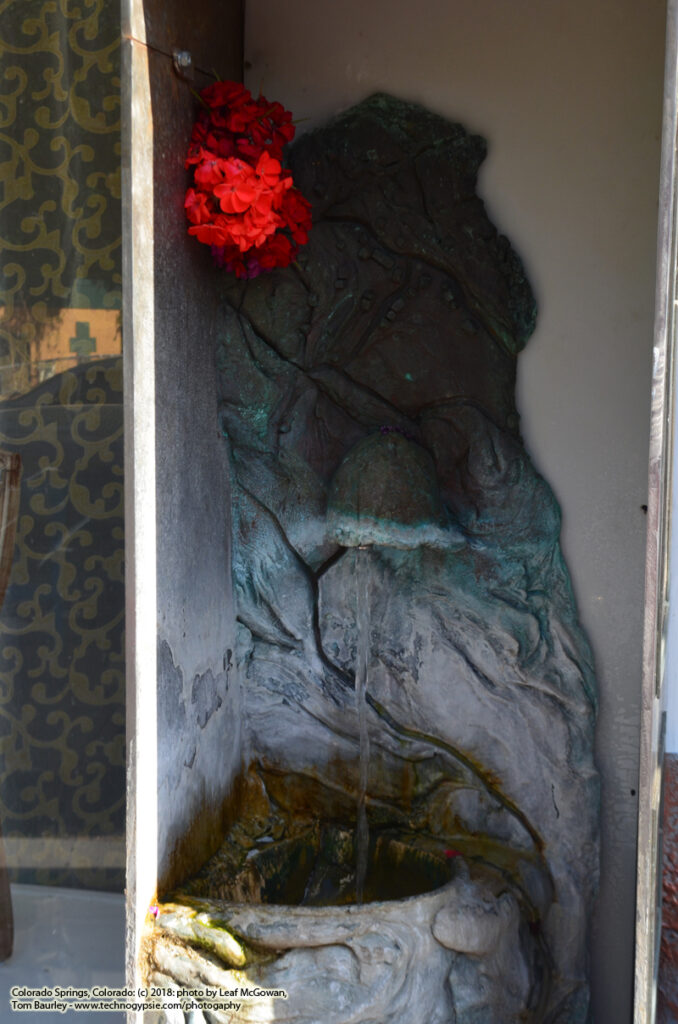
Discover more from The Naiads Well
Subscribe to get the latest posts sent to your email.
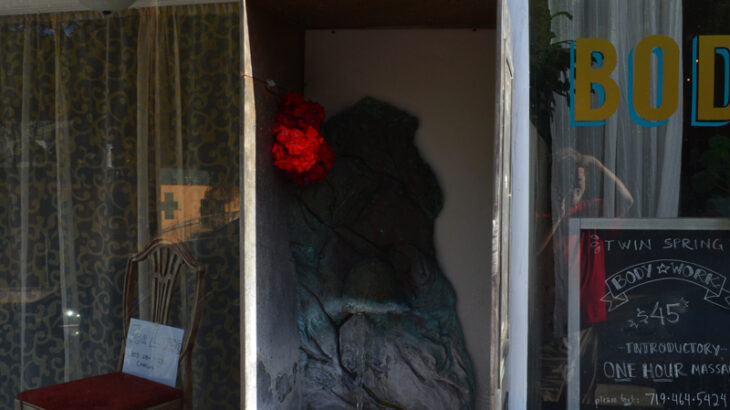
2 thoughts on “Lithia / Crosby / Twin Springs (Manitou Springs, Co)”